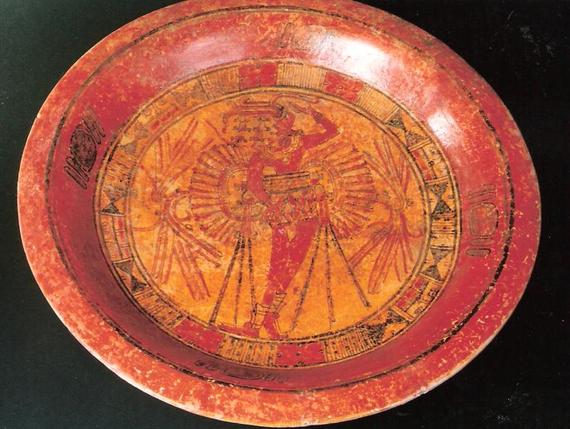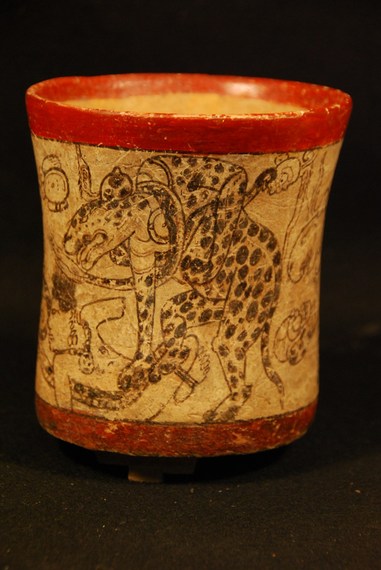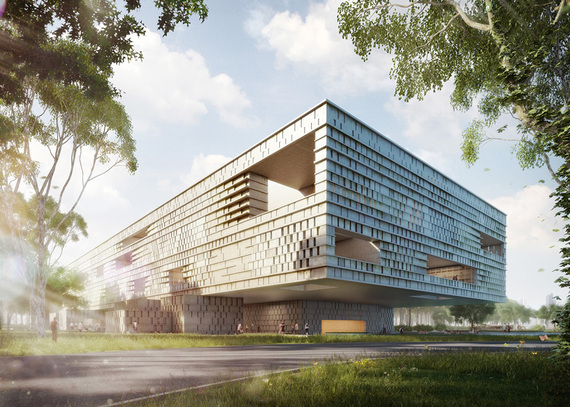Mr. Fernando Paiz is the quintessential Renaissance man. A philanthropist, businessman, cultural and environmental preservationist, humanitarian, father and grandfather - Mr. Paiz's storied life has yielded many titles and credits to his name.
A serial entrepreneur, Paiz is also the founder and builder of progressive businesses, including the first to introduce Internet and Cable TV services in Guatemala and first to introduce PET bottles in South America. In addition, he oversees several agricultural, energy, hospitality and real-estate developments in Guatemala, Nicaragua, El Salvador and Honduras.
Do you enjoy frozen mangos in your fruit smoothies? Thank, in part, Mr. Paiz who has invested in the cultivation of mangos for local consumption and as an export product to the U.S. In 2012 with the help of his capital, Nicaragua's first frozen foods facility was established, processing tons of mango cubes per year. Fueled by a strong work ethic, and a desire to help others, Paiz's business interests are far reaching. For example, Paiz is an active owner and developer of multi-megawatt solar energy installations in Honduras and a geothermal plant in Nicaragua, and is also a key strategy partner to sustainable real-estate developments, like Itz'ana Resorts & Residences in Belize.
Paiz fostered an ability to solve problems at an early age working at his family's business, La Fragua, a retail company that his father founded more than 80 years ago. In 2005, the shareholders in the company decided to bring in a strategic investor, Walmart, who had acquired a 33% share in the Central American Retail Holding Company (CARHCO), the partnership proved successful. This investment represented the first time Walmart would have a presence in Central America's retail marketplace, eventually culminating in the sale of the company to Walmart Mexico a few years later.
While Fernando Paiz has had great success in business, one of his most personal and treasured endeavors continues to unfold. Recently, I caught up with Mr. Paiz to learn more about La Ruta Maya Conservation Foundation, and his unwavering commitment to protect and preserve the rich Maya heritage in the region.
The La Ruta Maya Conservation Foundation is a private organization dedicated to rescuing and preserving pre-Columbian art and antiquities, in many cases receiving donations abroad so the pieces may be returned to Guatemala for legal registration and offered for exhibit in the country's museums. In doing so, the La Ruta Maya Foundation seeks to enrich public education, national pride, and the celebration of the Maya and Mesoamerican cultures.
La Ruta Maya Foundation was established in 1990 by Wilbur Garrett, then editor of National Geographic Magazine. Since then, the foundation has registered more than 3,000 archaeological artifacts, each of which have been carefully restored, conserved, and presently made accessible to researchers and the public.
For Mr. Paiz, his interest in Maya artifacts was stimulated as a 10-year-old boy, when he would pick up broken shards of pottery with his childhood friend at the construction site Roosevelt Boulevard exiting the city of Guatemala. "It's very unfortunate." Mr. Paiz noted. "Highway's and buildings were built atop many significant archeological sites, as was the case of pre-classic Kaminal Juyú (300BC), a most important city in antiquity in the valley of Guatemala. In the past there has been looting of Maya sites and illegal trading and export of important pieces. In an effort to stop this, today we have regulations and enforcement in place to deter the theft and deliberate destruction of Maya sites."
It was later in life Mr. Paiz discovered a passion for preserving Maya antiquities. He recalled the specific moment, "I was working for my father in our family store, I was 15 years old then. A gentleman came into the office and asked my father to buy a plate from him. My father had no interest so the man asked me if I wanted to buy it. I looked at this colorful piece depicting what appeared to be a ceremonial dance. I loved it immediately and bought the piece for the equivalent of $1. That was a lot of money in those days, especially for me as my salary was quite modest. But I loved the captured beauty of the piece and wanted to ensure it remained protected."
It was this plate, shown in the photograph below, which would inspire Mr. Paiz, and serve as the backdrop to his life-long dream and journey to return and restore historic artifacts so that the significance of the Maya culture can enrich the lives of this and future generations.
Mr. Paiz recalled that while he saw the plate as beautiful, it was his high school history teacher that explained the significance and age of the plate. "I discovered the power of storytelling, captured in the art and imagery of the pottery, and immediately felt the responsibility for being a caretaker of this one small window to the past."
The Mesoamerican cultural area spans from southern Mexico into Central America. Recognized as one of the six fundamental "cradles of civilization" worldwide, Maya culture spawned some of the most complex agricultural societies, urbanized cities, art and architecture, advanced mathematics, writing, calendar and astronomical systems.
Mr. Paiz added, "The Maya were a sophisticated society. They developed advanced urbanism in their cities with complex engineering for water management. Their knowledge of mathematics, astronomy and fully developed writing system with formal grammatical rules and language allowed them to develop major buildings and one of the most accurate calendars in existence. To celebrate Maya culture through the preservation and protection of their history and heritage is a celebration of humanity and life itself."
With financial support from Mr. Paiz, La Ruta Maya Foundation is working to put context to each of the more than 3,000 pieces in its collection. The Foundation has received grants from the Smithsonian Institute, and other organizations and sponsors in an effort to test the clay of unique pieces of their collection. Using scientific methods and processes including thermo luminescence (TL) and atomic testing to identify the place and date the pieces were made, the Foundation seeks to understand more about who, how, why, and when select artifacts were created and used. By incorporating sound science into their stewardship of Maya antiquities the Foundation is advancing our knowledge of how Maya people communicated, worked, and lived.
For Mr. Paiz and La Ruta Maya Foundation, public accessibility, education, and awareness are also pillars of preserving antiquities. Paiz remarked, "sustaining Maya culture happens not only through the preservation of material objects...the culture truly lives on when we can share and expand upon the richness of Maya culture through first-hand experience, interpretation, awareness and education. In an effort to extend our reach beyond Central America, we are sharing unique pieces from La Ruta Maya Foundation's collection for exhibition at other museums around the world including our most recent collaboration with the Drents Museum in the Netherlands."
La Ruta Maya Foundation has also teamed up with specialty resort developer and operator, The Foundry Collective, to establish a regional chapter of the organization in Belize. Through this unique partnership, artifacts from La Ruta Maya's collection will be on display in the common areas of two of The Foundry Collective's bespoke properties, Ka'ana Resort and the Itz'ana Resorts & Residences. The collaboration reinforces La Ruta Maya's commitment to make its collection of artifacts accessible to the public.
Showcasing La Ruta Maya Foundation's important collection of pre-Columbian artifacts has been a deliberate strategy by Mr. Paiz to raise global awareness of Guatemala's cultural heritage, and as a means of demonstrating national pride. In 2014, Paiz facilitated more than 80 Maya pieces to be shown for a week at the Los Angeles Convention Center. That and other focused events in Paris museums and in other major cities in the US have aided fundraising for Paiz and La Ruta Maya Foundation's regional vision to establish a world-class facility in Guatemala City.
Mr. Paiz is building support to establish Museo Maya de America as place where science, education, research, cultural and economic interests can come together. The proposed Museo Maya de America would house the National Museum of Archeology and Ethnography of Guatemala, together with visiting exhibits and private collections. This would anchor traditional ethnology yet also bridge cultural heritage and patrimony in ways that connect the past in meaningful ways of understanding our generation.
For example, Mr. Paiz dreams of the day when Maya collections can be exhibited, side-by-side, with visiting collections from cradles of civilization like Egypt, the Indus Valley, and China. "Can you imagine," Paiz said, "artifacts from early Egyptian civilization on display right next to Maya? What an incredible opportunity for comparative assessment, discovery and learning about the origins of humanity."
Designed by the Boston-based architectural firm over, under and Harry Gugger Studio, with Seis Arquitectos, the Museo Maya de America design is inspired by the distinctive art and architectural features of Maya civilization. To date, Mr. Paiz has provided seed funding for the design of the facility, and is actively working with regional and global partners toward the launch of a $100 million fundraising campaign.
A critical step in the process will be securing land and permits in Guatemala City so that the project can have anchor site and move forward in earnest. Leveraging his experience from building successful businesses, contracting and project development, Mr. Paiz said the facility will take 36 months to complete. Paiz's intentions are not modest. He believes the project, once complete, increased visits and tourism could yield more than 1% to Guatemala's annual gross domestic product. In tourist-based regions with deep cultural roots, the economic impact of museums is notable.
The Levón Institute at the University of Vaasa conducted an economic impact study of Museums' and found that they contribute significantly to the regional service economy including transportation, accommodations, food and beverage, and entertainment. As noted in the Levón Institute study, museum's activities also contribute to education/academic and research investments tied to universities, foundations, government organizations, and other regional businesses.
Paiz's vision is for the Museo Maya de America to be an inclusive center of knowledge for scientists, researchers, students, tourists, and cultural enthusiasts alike. The project could be a boon for Guatemala's economy and global reputation as a destination which converges art, culture, and history with contemporary infrastructure and amenities.
Our generation has a historic challenge and opportunity before it. The life we choose to lead today has a lasting impact and impression on tomorrow. Sustainability is about having clarity of mind and presence. It's also about treasuring the life we have, and celebrating life in and for the moment. Sustainability is much like a dance, fluid and flowing, with one foot rooted in the past and the other directing the future. The mechanics of our dance can be beautiful, but when we are out of rhythm with the beat of the earth and stars, we ungracefully stumble.
It's nice to know that people like Fernando Paiz exist, thirsting for knowledge, eager to give, and unafraid to dance. Preserving the past, protecting the present, and promising a better future - that's where passion and purpose collide for Mr. Paiz and his dream to establish the Museo Maya de America for Guatemala City and the world.



